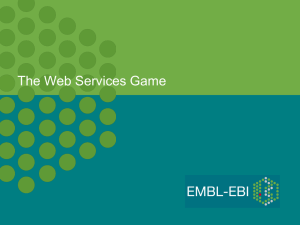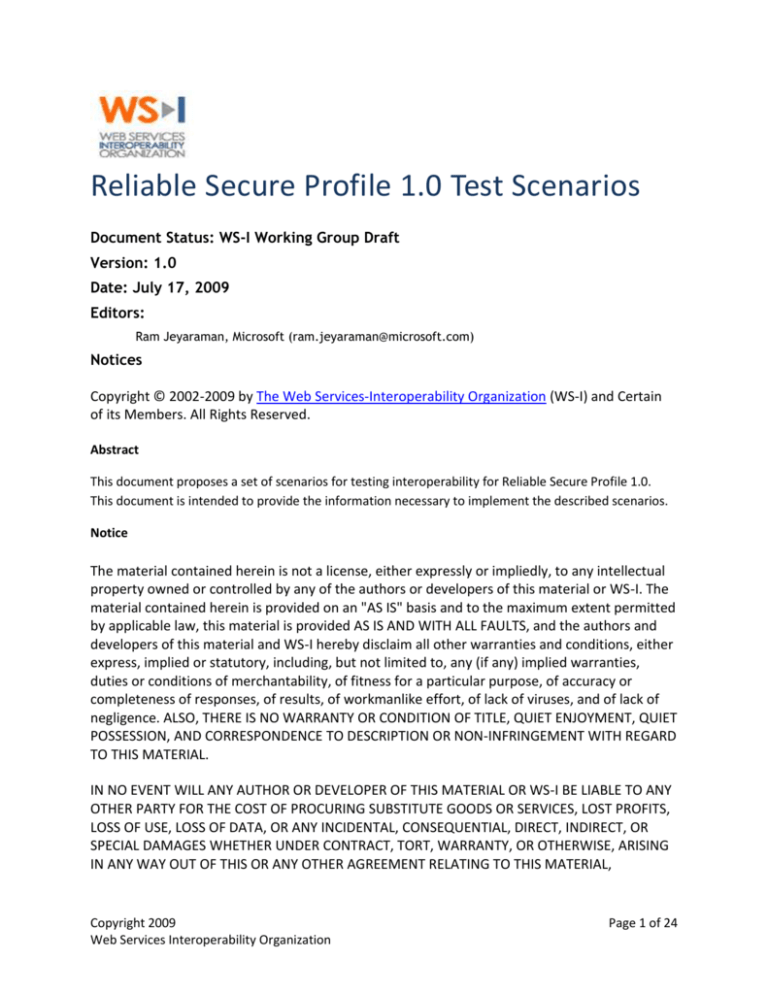
Reliable Secure Profile 1.0 Test Scenarios
Document Status: WS-I Working Group Draft
Version: 1.0
Date: July 17, 2009
Editors:
Ram Jeyaraman, Microsoft (ram.jeyaraman@microsoft.com)
Notices
Copyright © 2002-2009 by The Web Services-Interoperability Organization (WS-I) and Certain
of its Members. All Rights Reserved.
Abstract
This document proposes a set of scenarios for testing interoperability for Reliable Secure Profile 1.0.
This document is intended to provide the information necessary to implement the described scenarios.
Notice
The material contained herein is not a license, either expressly or impliedly, to any intellectual
property owned or controlled by any of the authors or developers of this material or WS-I. The
material contained herein is provided on an "AS IS" basis and to the maximum extent permitted
by applicable law, this material is provided AS IS AND WITH ALL FAULTS, and the authors and
developers of this material and WS-I hereby disclaim all other warranties and conditions, either
express, implied or statutory, including, but not limited to, any (if any) implied warranties,
duties or conditions of merchantability, of fitness for a particular purpose, of accuracy or
completeness of responses, of results, of workmanlike effort, of lack of viruses, and of lack of
negligence. ALSO, THERE IS NO WARRANTY OR CONDITION OF TITLE, QUIET ENJOYMENT, QUIET
POSSESSION, AND CORRESPONDENCE TO DESCRIPTION OR NON-INFRINGEMENT WITH REGARD
TO THIS MATERIAL.
IN NO EVENT WILL ANY AUTHOR OR DEVELOPER OF THIS MATERIAL OR WS-I BE LIABLE TO ANY
OTHER PARTY FOR THE COST OF PROCURING SUBSTITUTE GOODS OR SERVICES, LOST PROFITS,
LOSS OF USE, LOSS OF DATA, OR ANY INCIDENTAL, CONSEQUENTIAL, DIRECT, INDIRECT, OR
SPECIAL DAMAGES WHETHER UNDER CONTRACT, TORT, WARRANTY, OR OTHERWISE, ARISING
IN ANY WAY OUT OF THIS OR ANY OTHER AGREEMENT RELATING TO THIS MATERIAL,
Copyright 2009
Web Services Interoperability Organization
Page 1 of 24
WHETHER OR NOT SUCH PARTY HAD ADVANCE NOTICE OF THE POSSIBILITY OF SUCH
DAMAGES.
Feedback
The Web Services-Interoperability Organization (WS-I) would like to receive input, suggestions
and other feedback ("Feedback") on this work from a wide variety of industry participants to
improve its quality over time.
By sending email, or otherwise communicating with WS-I, you (on behalf of yourself if you are
an individual, and your company if you are providing Feedback on behalf of the company) will
be deemed to have granted to WS-I, the members of WS-I, and other parties that have access
to your Feedback, a non-exclusive, non-transferable, worldwide, perpetual, irrevocable, royaltyfree license to use, disclose, copy, license, modify, sublicense or otherwise distribute and
exploit in any manner whatsoever the Feedback you provide regarding the work. You
acknowledge that you have no expectation of confidentiality with respect to any Feedback you
provide. You represent and warrant that you have rights to provide this Feedback, and if you
are providing Feedback on behalf of a company, you represent and warrant that you have the
rights to provide Feedback on behalf of your company. You also acknowledge that WS-I is not
required to review, discuss, use, consider or in any way incorporate your Feedback into future
versions of its work. If WS-I does incorporate some or all of your Feedback in a future version of
the work, it may, but is not obligated to include your name (or, if you are identified as acting on
behalf of your company, the name of your company) on a list of contributors to the work. If the
foregoing is not acceptable to you and any company on whose behalf you are acting, please do
not provide any Feedback.
Feedback on this document should be directed to wsi_rsp_comment@ws-i.org.
Copyright 2009
Web Services Interoperability Organization
Page 2 of 24
Table of Contents
1
Scenarios ............................................................................................................................................... 5
1.1
Reliable one-way ........................................................................................................................... 5
1.1.1
Reliable_OneWay_BPx.x_AddressableClient_AddressableService ...................................... 6
1.1.2
Reliable_OneWay_BPx.x_NonAddressableClient_AddressableService................................ 6
1.2
Reliable request-response ............................................................................................................ 6
1.2.1
Reliable_RequestReply_BPx.x_AddressableClient_AddressableService_Offer .................... 7
1.2.2
Reliable_RequestReply_BPx.x_AddressableClient_AddressableService_NoOffer ............... 7
1.2.3
Reliable_RequestReply_BPx.x_NonAddressableClient_AddressableService_Offer ............. 8
1.2.4
Reliable_RequestReply_BPx.x_NonAddressableClient_AddressableService_NoOffer ........ 8
1.3
Retransmission Scenarios ............................................................................................................. 9
1.3.1
Reliable_OneWay_BP20_AddressableClient_AddressableService_DropMessage .............. 9
1.3.2
Reliable_RequestReply_BP20_NonAddressableClient_AddressableService_DropFirstMess
ageOnce 10
1.3.3
SecureReliable One-Way Addressable Drop Message ........................................................ 10
1.3.4
SecureReliable Request-Reply Non-Addressable Drop Message ....................................... 10
1.4
Negative Scenarios ...................................................................................................................... 10
1.4.1
Reliable Request-Reply Addressable Fault-CreateSequence .............................................. 11
1.4.2
Secure Reliable Request-Reply Addressable Fault-CreateSequence .................................. 11
1.4.3
Test for R0001 ..................................................................................................................... 11
1.4.4
Test for R0400 ..................................................................................................................... 11
1.5
Request/Response - non-addressable client .............................................................................. 11
1.6
Non-addressable Service............................................................................................................. 12
1.6.1
Reliable One-way – Addressable Client / Non-addressable Service ................................... 12
1.6.2
Request/Response - non-addressable service .................................................................... 12
1.6.3
Request/Response - non-addressable secure service ........................................................ 13
1.7
Secure Conversation ................................................................................................................... 13
1.8
Reliable request-response with App fault .................................................................................. 14
1.9
Sequence carry-over and independence .................................................................................... 14
1.10
Dropping of lifecycle messages ................................................................................................... 15
1.11
Reliable_One_Way_Requests_Anon_AcksTo_Multiple_Sequences .......................................... 15
Copyright 2009
Web Services Interoperability Organization
Page 3 of 24
1.12
Reliable_Request_Response_AcksTo_RefParm.......................................................................... 15
1.13
Reliable_Request_Empty_Response........................................................................................... 16
2
Appendix – WSDL operations ............................................................................................................. 16
3
Appendix – Test WSDL ........................................................................................................................ 17
4
Appendix – XSD ................................................................................................................................... 19
5
Appendix – Test WSDL (RspEmpty.wsdl) for scenario 1.13 ................................................................ 20
6
Appendix – Test WSDL (RspEmpty0.wsdl) for scenario 1.13 .............................................................. 21
7
Appendix – Test XSD (RspEmpty0.xsd) for scenario 1.13 ...................... Error! Bookmark not defined.
8
Appendix – Test WSDL (RspEmpty1.xsd) for scenario 1.13 ................................................................ 22
9
Acknowledgements............................................................................................................................. 22
10
Revision History .............................................................................................................................. 22
Copyright 2009
Web Services Interoperability Organization
Page 4 of 24
The purpose of these scenarios is to cover profile requirements. However, these scenarios do not cover
all requirements set forth in RSP 1.0, but should be adequate enough to cover most of the
requirements. Even though each of the scenarios is different, some of scenarios may test the same
profile requirements as other scenarios. In such cases, implementers may choose to implement one of
such overlapping scenarios and not implement all of the overlapping scenarios.
Testing some of the requirements specified in RSP can be easily done by examining common message
flows between two endpoints. However, in some cases the requirements might require certain
preconditions or runtime semantics that necessitate a client or a service endpoint to take certain actions
that are specific to the tests defined by the RSP test scenario documentation. In such cases,
implementations being tested need to determine how best to recreate those environmental conditions;
for example, a specialized test driver may be needed to implement some parts of the test scenarios.
1 Scenarios
1.1 Reliable one-way
Client establishes a Reliable Session, then sends a message and initiates a close of the Session. Expand
over the following options, giving 8 scenarios:
1. Security
a. No Security
b. Secure
2. Basic Profile Version
a. BP 1.2 (SOAP 1.1 + WS-Addressing 1.0)
b. BP 2.0 (SOAP 1.2 + WS-Addressing 1.0)
3. Addressable / Non-Addressable locations
a. Addressable Client, Addressable Service
b. Non-Addressable Client, Addressable Service
The Secure Scenarios are not listed here, but besides setting up the Secure Session, the Message
Exchange pattern is the same. See the Security section for details.
This first set of scenarios is also expanded over BP 1.2 and BP 2.0. Since the only difference is the SOAP
version, and the Message Exchange Pattern is not affected, BP version is not called out explicitly. The
message examples linked show SOAP 1.2 (BP 2.0).
For the request-reply scenarios, the term, “request sequence” is used to define the sequence initiated
by the Client requests to the Service. The term, “response sequence” is used to define the sequence
initiated by the Service.
Copyright 2009
Web Services Interoperability Organization
Page 5 of 24
1.1.1 Reliable_OneWay_BPx.x_AddressableClient_AddressableService
In this scenario, one-way exchange is used. The Client’s application-level message is a simple Ping
message, and no application-level response is expected. Since one-way exchange is used, there is no
requirement to use WS-MakeConnection messages.
Message Exchange Pattern
The sequence begins with a CreateSequence message sent from the Client to the Service. The Service
responds on the HTTP response with a CreateSequenceResponse. The Client then sends a Ping message.
The Service responds by acknowledging the message with a SequenceAcknowledgement; there are no
application messages to be sent on the HTTP response. Finally, the sequence is closed by the Client
sending a CloseSequence message. The Service responds with a CloseSequenceResponse. Last, the
Client sends a TerminateSequence to which the Service responds with a TerminateSequenceResponse.
1.1.2 Reliable_OneWay_BPx.x_NonAddressableClient_AddressableService
In this scenario, the Client is non-addressable. But since it is One-Way, the Server can use the HTTP
response for responses. Use of ws-MakeConnection is not necessary.
Message Exchange Pattern
The sequence begins with a CreateSequence message sent from the Client to the Service. The Service
responds with a CreateSequenceResponse on the HTTP response. The Client then sends a Ping message.
The Service only responds by acknowledging the message with a SequenceAcknowledgement on the
HTTP response. The “To” header of the SequenceAcknowledgement is the WS-Addressing anonymous
URI, since no MakeConnection was used. Finally, the sequence is closed by the Client sending a
CloseSequence message. The Service responds with a CloseSequenceResponse. Last, the Client sends a
TerminateSequence to which the Service responds with a TerminateSequenceResponse.
1.2 Reliable request-response
These scenarios will follow the basic pattern of opening a sequence, sending 3 application messages,
then closing the sequence. These scenarios are parameterized. The non-addressable scenarios using
MakeConnection will cover R2000, R2001, R2004, R2100, R2101, R2110, R2111, R2112, and R2113. The
Secure scenarios cover R3010, R3100, R3101, R3102, R3110, R3111, R3114, R3115, and R3300. The
RequestReply scenarios will cover R0010, R0011, R0020, and R0200. All scenarios will be covering
R0102, R0210, R0600, R0800, R0900, R0901, and R2005.
Reliable asynchronous two-way exchange: Expand over the following options, giving 16 scenarios:
1. Security
a. No Security
b. Secure
2. Basic Profile Version
a. BP 1.2 (SOAP 1.1 + WS-Addressing 1.0)
Copyright 2009
Web Services Interoperability Organization
Page 6 of 24
b. BP 2.0 (SOAP 1.2 + WS-Addressing 1.0)
3. Addressable / Non-Addressable locations
a. Addressable Client, Addressable Service
b. Non-Addressable Client, Addressable Service - Service responds to client requests with
either a 202 or a SequenceAcknowledgement on the HTTP response, then Client sends
MakeConnection request to get the response messages in the response sequence.
4. Offer: The “offer” element is used to establish the response.
a. Use Offer
b. Do not use Offer
1.2.1 Reliable_RequestReply_BPx.x_AddressableClient_AddressableService_Offer
This scenario introduces a Request-Reply pattern. For application-level messages, the Client will send an
Echo message, to which the Server will respond with an EchoResponse message. In this case, both the
Client and Service are addressable, so the use of WS-MakeConnection is not necessary. The message
exchanges happen reliably from the Client to the Service and from the Service to the Client.
Message Exchange Pattern
The sequence begins with a CreateSequence message sent from the Client to the Service. The body of
this CreateSequence message contains the “offer” element so that the Service can establish a sequence
with the endpoint in the “offer.” This sequence will be referred to as the “return sequence.” The
“AcksTo” and “ReplyTo” headers in the CreateSequence uses an addressable URI same as the endpoint
in the “offer”. The Service responds with a CreateSequenceResponse. The Client then sends an Echo
message. The Service responds with a SequenceAcknowledgement and an EchoResponse message on
the return sequence. The Client responds to the EchoResponse with a SequenceAcknowledgement on
the request sequence. Finally, the sequence is closed by the Client sending a CloseSequence message.
The Service responds with a CloseSequenceResponse. Then, the Client sends a TerminateSequence to
which the Service responds with a TerminateSequenceResponse. Optionally, this sequence closing may
also happen for the return sequence from the Service to the Client.
Note: The lifecycle messages may contain a WS-Addressing [reply endpoint] property set to a WSAddressing anonymous URI.
1.2.2 Reliable_RequestReply_BPx.x_AddressableClient_AddressableService_NoOffer
The sequence begins with a CreateSequence message sent from the Client to the Service. The body of
this CreateSequence message does not contain the “offer” element. The Service responds with a
CreateSequenceResponse on the HTTP response. Since an “offer” is not included in the
CreateSequence, the Service must issue a CreateSequence for the response sequence to the Client to
which the Client responds with a CreateSequenceResponse. The Client then sends an Echo message.
The Service responds with a SequenceAcknowledgement and an EchoResponse message on the return
sequence. Note that piggybacking may or may not occur.
Copyright 2009
Web Services Interoperability Organization
Page 7 of 24
The Client responds to the EchoResponse with a SequenceAcknowledgement on the request sequence.
Finally, the sequence is closed by the Client sending a CloseSequence message. The Service responds
with a CloseSequenceResponse. Then, the Client sends a TerminateSequence to which the Service
responds with a TerminateSequenceResponse. Optionally, this sequence closing may also happen for
the return from the Service to the Client.
1.2.3
Reliable_RequestReply_BPx.x_NonAddressableClient_AddressableService_Offer
This scenario uses MakeConnection messages issued by the Client to get messages from the Service.
Because the Client is not addressable, all Reply-To and AcksTo addresses from the Client point to the
MakeConnection Anonymous URI.
Message Exchange Pattern
The sequence begins with a CreateSequence message sent from the Client to the Service. Since the
Client is Non-Addressable the Service responds on the HTTP response with a CreateSequenceResponse.
An “offer” element (containing an instance of MakeConnection Anonymous URI) is used in the body of
the CreateSequence for the Service to establish a return session with the Client. The Client then sends
an Echo message. The Client will also send a MakeConnection message to the Service on the response
sequence to get the EchoResponse message.
The Service replies to the Echo message with a SequenceAcknowledgement on either the HTTP response
of the request sequence or directly on the response sequence in response to the MakeConnection. The
Service sends Sequence Acknowledgements on the HTTP response if the wsa:ReplyTo of the request
matches the AcksTo EPR (including reference parameters). Otherwise, the Service sends the Sequence
Acknowledgement only as a result of a Make Connection.
When the Service has the EchoResponse available, it sends the EchoResponse on the response sequence
in response to a MakeConnection issued by the Client. When the Client gets the EchoResponse, it
responds with a SequenceAcknowledgement on the request sequence.
Finally, the sequence is closed by the Client sending a CloseSequence message. The Service responds
on the HTTP response with a CloseSequenceResponse. Then, the Client sends a TerminateSequence, to
which the Service responds with a TerminateSequenceResponse. A similar exchange may happen for
the response sequence, but the Client must issue MakeConnection messages to get the CloseSequence
and TerminateSequence messages from the Service.
Note, in this message exchange pattern, piggybacking may or may not occur.
1.2.4
Reliable_RequestReply_BPx.x_NonAddressableClient_AddressableService_NoOffer
This scenario uses MakeConnection messages issued by the Client to get messages from the Service.
Message Exchange Pattern
Copyright 2009
Web Services Interoperability Organization
Page 8 of 24
The sequence begins with a CreateSequence message sent from the Client to the Service. Since the
Client is Non-Addressable, and exchange is Request-Reply, the Service responds on the HTTP response
with a CreateSequenceResponse. Additionally, since the CreateSequence does not contain an “offer,”
the Client must issue a MakeConnection on what is to be the Server’s response sequence with the
Client. The Server responds to this with a CreateSequence. The Client responds to that CreateSequence
with a CreateSequenceResponse. The Client then sends an Echo message. The Client will also send a
MakeConnection message to the Service to get the EchoResponse message. The Service replies to the
Echo message with a SequenceAcknowledgement either on the HTTP response of the request sequence
or directly on the response sequence in response to the MakeConnection. When the Service has the
EchoResponse available, it sends the EchoResponse on the response sequence in response to a
MakeConnection issued by the Client. When the Client gets the EchoResponse, it responds with a
SequenceAcknowledgement on the request sequence. Finally, the sequence is closed by the Client
sending a CloseSequence message. The Service responds on the HTTP response with a
CloseSequenceResponse. Then, the Client sends a TerminateSequence, to which the Service responds
with a TerminateSequenceResponse. A similar exchange happens on the response sequence, but the
Client must issue MakeConnection messages to get the CloseSequence and TerminateSequence
messages from the Service.
1.3 Retransmission Scenarios
A mechanism for dropping messages is required for these scenarios. This will test retrying messages.
These scenarios cover R0101, R0102, R0110, and R0120. The secure retransmission scenarios cover
R3301.
The following describes the retransmission scenarios. This section only describes the message exchange
patterns. These scenarios are to be expanded by running both in the absence of Security and with
Security enabled.
A mechanism for dropping specific sequence messages is required for these scenarios.
1.3.1
Reliable_OneWay_BP20_AddressableClient_AddressableService_DropMessage
This scenario tests retransmission of dropped messages with a One-Way scenario and addressable RM
nodes. Retransmit unacknowledged sequence messages (One-Way pattern): Drop a sequence message
from the Client at least once before allowing it to be sent to the Service. Both Client and Service are
addressable.
Message Exchange Pattern
The sequence begins with a CreateSequence message sent from the Client to the Service. The Service
responds with a CreateSequenceResponse. The Client then sends 1 Ping message. The message is
dropped before the Server can receive it. Since the Client doesn’t receive a SequenceAcknowledgement
from the Server, the Client will resend the message. Provided the message is not dropped this time, the
Service will respond by acknowledging the message with a SequenceAcknowledgement on the HTTP
Copyright 2009
Web Services Interoperability Organization
Page 9 of 24
response. Finally, the sequence is closed by the Client sending a CloseSequence message. The Service
responds with a CloseSequenceResponse. The Client sends a TerminateSequence to which the Service
responds with a TerminateSequenceResponse.
1.3.2
Reliable_RequestReply_BP20_NonAddressableClient_AddressableService_DropFirstM
essageOnce
This scenario will use MakeConnection to get a dropped EchoResponse message from the Service. Since
the scenario uses RequestReply with a Non-Addressable Client, the Client already issues
MakeConnection calls to get every message from the Service.
Use MakeConnection to get unacknowledged messages.
Request-Reply with Non-Addressable Client, Addressable Service.
Client establishes a Sequence and sends an application request message (Echo).
Server sends the application response message (EchoResponse), but it is dropped.
The Server will resend the message because it never received a SequenceAcknowledgement.
Message Exchange Pattern
The sequence begins the same way as
Reliable_RequestReply_BPx.x_NonAddressableClient_AddressableService_Offer. The Client then sends
an Echo message. The Server replies on the HTTP response with a SequenceAcknowledgement. The
Client sends a MakeConnection message to the Service on the response sequence to get the
EchoResponse message. The Server replies to the MakeConnection with the EchoResponse message.
This message is dropped before reaching the Client. The Client should continue to send
MakeConnection, since it didn’t receive a response on the first MakeConnection request. The Server
receives the MakeConnection and resends the EchoResponse. The message is not dropped this time.
Upon receipt of the EchoResponse message, the Client sends a SequenceAcknowledgement back to the
Service via a new HTTP request. The message exchanges are closed in the same manner as with
Reliable_RequestReply_BPx.x_NonAddressableClient_AddressableService_Offer.
1.3.3 SecureReliable One-Way Addressable Drop Message
This is same as 1.3.1 but run under a secure environment (where message exchanges are secured using
WS-SecureConversation).
1.3.4 SecureReliable Request-Reply Non-Addressable Drop Message
This is same as 1.3.2 but run under a secure environment (where message exchanges are secured using
WS-SecureConversation).
1.4 Negative Scenarios
These two scenarios cover the transmission of a fault generated at the RMD while processing a
Copyright 2009
Web Services Interoperability Organization
Page 10 of 24
CreateSequence message. The non-secure scenario covers R0400. The secure scenario covers R0400,
R3120, R3121, and R3122.
1.4.1
Reliable Request-Reply Addressable Fault-CreateSequence
This scenario tests the transmission of a fault from the Service to the Client.
Message Exchange Pattern
The Client sends a CreateSequence message to the Service. While processing the message, the Service
faults. This fault must be retransmitted back to the Client. The Service does not create a sequence or
send back a CreateSequenceResponse.
1.4.2 Secure Reliable Request-Reply Addressable Fault-CreateSequence
This scenario is identical to scenario 1.4.1, but run under a secure environment (where message
exchanges are secured using WS-SecureConversation). This is to ensure coverage of requirement R3120.
1.4.3
Test for R0001
The object of this scenario is to verify that the service does NOT generate a fault due to unrecognizable
extensions. This scenario tests requirement R0001.
A client-side RMS sends a CreateSequence with no offer but with an extension element qualified
with a namespace (http://dummy.examples.org/unknown/nmspace) in it. The expectation is that
the namespace is unrecognizable by the service.
The service-side RMD returns a CreateSequenceResponse containing a sequence identifier.
The client-side RMS closes and terminates the sequence normally.
1.4.4
Test for R0400
This scenario tests requirement R0400.
The client-side RMS sends a CloseSequence message with an unknown sequence identifier
(http://dummy.examples.org/unknown/nmspace) in it.
The service-side RMD must not send a CloseSequenceResponse. This shows that the service did
not successfully process the CloseSequence message. Note: It may or may not send a Fault
instead.
1.5 Request/Response - non-addressable client
This scenario involves a client sending a request message to a service and using MC to pull back the
response. In this case we will mimic a situation where the service is a long-running service and thus
cannot (or does not want) to keep the current transport back-channel open the entire time.
Copyright 2009
Web Services Interoperability Organization
Page 11 of 24
Message Exchange Pattern
Client sends a request message to the service. The request message includes a wsa:ReplyTo and
wsa:FaultTo set to an instance of the MC Anonymous URI. The service returns an HTTP 202 Accepted.
Periodically, the client will send a MakeConnection message to the service to allow for any possible
response to flow. If the client used a different MC Anonymous URI for wsa:ReplyTo and wsa:FaultTo
then it is expected that the client will send two different MakeConnection messages - however, the use
of one or two URIs is an implementation choice. Upon receipt of a MC message, the service will either
allow a pending message targeted for the included MC Anonymous URI to flow, or after waiting an
certain amount of time for a message to be ready, it will return an HTTP 202 Accepted. The client is
expected to continue to send MakeConnection messages until a response is received.
1.6 Non-addressable Service
1.6.1
Reliable One-way – Addressable Client / Non-addressable Service
In this scenario the client is addressable and the service is non-addressable. To initiate the message
changes from the client, the client must first be given an EPR (using the MC Anonymous URI).
Message Exchange Pattern
The scenario begins with the service sending its EPR to the client (once we get the WSDL for the app
msgs we can add this one) - the EPR uses an instance of the MC Anonymous URI since the service is nonaddressable. The client then initiates a new RM Sequence with the service by trying to send a
CreateSequence to the EPR it was provided, however the transmission of the CreateSequence is done by
the service sending MC messages to the client. The service sends a MC to the client and pulls back the
CreateSequence. The service response with a CSR to the CS's ReplyTo EPR. Normal one-way message
scenario processing occurs (one-way app msgs, terminateSequence msgs are sent from the client to the
service, acks are sent from the service to the client's CS/AcksTo EPR). Each of the messages from the
client to the service is transmitted on the back-channel of a MC request message.
1.6.2
Request/Response - non-addressable service
This scenario involves a client initiating a sequence of messages exchanges to a service but the service is
not addressable. As mentioned in the MC specification, a classic example of this is an event producer
sending notifications to an event consumer, where the event consumer is behind a firewall. In this
scenario the notion of a client and service are turned around and as such a new term, "Initiator", is
introduced to represent the endpoint that starts the processing of the scenario. Note, the initiator may
in reality be the "service" to keep the number of endpoints needed to run this scenario down to two.
Message Exchange Pattern
An initiator provides the client with the EPR to the service (a new operation may be needed here). This
EPR contain an instance of the MC Anonymous URI to uniquely identify the service. The client will
initiate a series of one-way and request-response messages with the service. Note, in the requestCopyright 2009
Web Services Interoperability Organization
Page 12 of 24
response case the wsa:ReplyTo will be an addressable EPR. Since the [destination] EPR for these
messages is an instance of the MC Anonymous URI they will only be transmitted as result of the service
sending a MC to the client. Thus, the service must periodically send a MC to the client. Upon receive of
a message from the client, the service will process each message. If there is a response then it is sent to
the appropriate EPR (replyTo vs faultTo) over a new HTTP connection.
1.6.3
Request/Response - non-addressable secure service
1.7
This scenario is the same as Non-addressable Service
1.7.1
Reliable One-way – Addressable Client / Non-addressable Service
In this scenario the client is addressable and the service is non-addressable. To initiate the message
changes from the client, the client must first be given an EPR (using the MC Anonymous URI).
Message Exchange Pattern
The scenario begins with the service sending its EPR to the client (once we get the WSDL for the app
msgs we can add this one) - the EPR uses an instance of the MC Anonymous URI since the service is nonaddressable. The client then initiates a new RM Sequence with the service by trying to send a
CreateSequence to the EPR it was provided, however the transmission of the CreateSequence is done by
the service sending MC messages to the client. The service sends a MC to the client and pulls back the
CreateSequence. The service response with a CSR to the CS's ReplyTo EPR. Normal one-way message
scenario processing occurs (one-way app msgs, terminateSequence msgs are sent from the client to the
service, acks are sent from the service to the client's CS/AcksTo EPR). Each of the messages from the
client to the service is transmitted on the back-channel of a MC request message.
1.8 Request/Response - non-addressable service except the first message
sent by the client to the service is a RequestSecurityToken message. This
conversation between the two endpoints. The remainder of the messages
defined in Non-addressable Service
1.8.1
Reliable One-way – Addressable Client / Non-addressable Service
In this scenario the client is addressable and the service is non-addressable. To initiate the message
changes from the client, the client must first be given an EPR (using the MC Anonymous URI).
Message Exchange Pattern
The scenario begins with the service sending its EPR to the client (once we get the WSDL for the app
msgs we can add this one) - the EPR uses an instance of the MC Anonymous URI since the service is nonaddressable. The client then initiates a new RM Sequence with the service by trying to send a
CreateSequence to the EPR it was provided, however the transmission of the CreateSequence is done by
the service sending MC messages to the client. The service sends a MC to the client and pulls back the
CreateSequence. The service response with a CSR to the CS's ReplyTo EPR. Normal one-way message
Copyright 2009
Web Services Interoperability Organization
Page 13 of 24
scenario processing occurs (one-way app msgs, terminateSequence msgs are sent from the client to the
service, acks are sent from the service to the client's CS/AcksTo EPR). Each of the messages from the
client to the service is transmitted on the back-channel of a MC request message.
Request/Response - non-addressable service will be the same, except they are protected using this
newly established security context. Upon completion of the application messages, the client will then
send Cancel to shut down the secure conversation.
Message Exchange Pattern
An initiator provides the client with the EPR to the service (a new operation may be needed here). This
EPR contain an instance of the MC Anonymous URI to uniquely identify the service. The client sends an
RST to the service to initiate a new secure conversation. The service will response to the wsa:ReplyTo
EPR over a new HTTP connection. The client will initiate a series of one-way and request-response
messages with the service - each will be protected with the newly created security context. Note, in the
request-response case the wsa:ReplyTo will be an addressable EPR. Since the [destination] EPR for
these messages is an instance of the MC Anonymous URI they will only be transmitted as result of the
service sending a MC to the client. Thus, the service must periodically send a MC to the client. Upon
receive of a message from the client, the service, after verifying the messages are properly secured, will
process each message. If there is a response then it is sent to the appropriate EPR (replyTo vs faultTo)
over a new HTTP connection - again protected with the established security context. When the client is
done it will send a Cancel to the service, also thru the use of a MC message exchange.
1.9 Secure Conversation
In this scenario we test the basics of the SecureConversation w.r.t. how RSP profiles its use.
Message Exchange Pattern
This scenario will involve the creation of a new security context, modifying it and then canceling it. The
message overall flow will consist of:
1 - Client sends an RST to the service
2 - Service responds with an RSTRC
3 - Client sends an Echo, Service responds with an EchoResponse - both secured by the context
established in 1/2.
4 - Client Renews the context (RST <-> RSTR)
5 - Client sends an Echo, Service responds with an EchoResponse - both secured by the context
established in 1/2.
6 - Client Cancels the context (RST <-> RSTR)
7 - Client sends an Echo, Service rejects the request due to the context no longer being valid.
1.10 Reliable request-response with App fault
This scenario is the same as a reliable request/response except an application fault is generated for one
of the messages.
Copyright 2009
Web Services Interoperability Organization
Page 14 of 24
Message Exchange Pattern
Follow the same MEP as for Reliable Request/Response+Offer: RMS send CS+Offer. RMD responds with
CSR+Accept. RMS sends a series of request messages. RMD responds with either non-faulting response,
or with a fault (based on the data within the request - e.g. perhaps an Echo w/o 'text' generates a fault).
Each response, non-fault or fault, will be sent using the Offered sequence from the original CS/CSR
exchange. Finally, RMS sends a TS and RMD responds with a TSR.
1.11 Sequence carry-over and independence
In this scenario we verify that a RM node does not assume that termination of one sequence implicitly
terminates any other sequence.
Message Exchange Pattern
1. Client-side RMS sends CS+Offer to service-side RMD. Service-side responds with a CSR and
accepts the offered sequence.
2.
The client reliably sends a request using the original sequence; the request message contains a
AckRequested header to ensure that the acknowledgements occur before a response is sent..
The service-side RMD successfully sends acknowledgement for the request received to the
client-side RMS.
3. The nature of the request is such that the application/service takes at least 60 seconds to
respond. During that time, the client-side RMS shuts down the original sequence; that is, the
client-side RMS sends CloseSequence followed by a TerminateSequence to service-side RMD.
The service-side RMD responds with CloseSequenceResponse followed by a
TerminateSequenceResponse to the client side RMS ending the original sequence .
4. After 60 seconds (or the set delay in the request processing) elapses, the service reliably sends a
response using the offered sequence. The client-side RMD successfully sends an
acknowledgement for the response to the service-side RMS.
5. The service-side RMS shuts down the offered sequence.
1.12 Dropping of lifecycle messages
In this scenario RM Lifecycle Messages are dropped and the sender is expected to resend them. Aside
from the choice of which message to drop, there is the variant of the request message vs the response
message being dropped and what the receiver will do upon receipt of a resent request message.
Message Exchange Pattern
Copyright 2009
Web Services Interoperability Organization
Page 15 of 24
Variant 1 - RMS sends a CreateSequence that is lost before the RMD receives it. The RMS resends it at
some point later. The RMD responds with a CreateSequenceResponse.
Variant 2 - RMS sends a CreateSequence, the CreateSequenceResponse is lost. The RMS resends the
CreateSequence. If the RMS uses the same SeqID then the RMD returns a "Create Sequence Refused"
fault. The RMS sends a CreateSequence with a new SeqID and the RMD responds with a
CreateSequenceResponse.
Variant 3 - RMS sends a CreateSequence, RMD responds with a CreateSequenceResponse. Some
number of application messages is sent. The RMS sends a CloseSequence that is lost before the RMD
receives it. The RMS resends the CloseSequence and the RMD responds with a
CloseSequenceResponse.
Variant 4 - RMS sends a CreateSequence, RMD responds with a CreateSequenceResponse. Some
number of application messages is sent. The RMS sends a CloseSequence and the
CloseSequenceResponse is lost. The RMS resends the CloseSequence and the RMD responds with a
CloseSequenceResponse.
Variant 5 - RMS sends a CreateSequence, RMD responds with a CreateSequenceResponse. Some
number of application messages is sent. The RMS sends a TerminateSequence that is lost before the
RMD receives it. The RMS resends the TerminateSequence and the RMD responds with a
TerminateSequenceResponse.
Variant 6 - RMS sends a CreateSequence, RMD responds with a CreateSequenceResponse. Some
number of application messages is sent. The RMS sends a TerminateSequence and the
TerinateSequenceResponse is lost. The RMS resends the TerminateSequence and the RMD responds
with an "Unknown Sequence Fault".
1.13 Reliable_One_Way_Requests_Anon_AcksTo_Multiple_Sequences
The client creates two sequences to the service in the identical way; the CreateSequence message
contains an anonymous AcksTo and there is no Offer. The service supports a one-way message. The
client reliably sends a number of messages to the service, alternating the sequence for each message.
1.14 Reliable_Request_Response_AcksTo_RefParm
The client creates a sequence to the service with a CreateSequence message that contains a nonanonymous AcksTo with ReferenceParameters. The CreateSequence may or may not contain an Offer.
The service supports reliable requests and either reliable or non-reliable responses. The client reliably
sends a number of messages to the service. The /wsa:ReplyTo/wsa:Address for all these request should
be identical to the /wsrm:CreateSequence/wsrm:AcksTo/wsa:Address but the
/wsa:ReplyTo/wsa:ReferenceParameters should alternate between a set that is identical to
/wsrm:CreateSequence/wsrm:AcksTo/wsa:ReferenceParameters and a set that is different.
Copyright 2009
Web Services Interoperability Organization
Page 16 of 24
Note: An implementation must implement the service side behavior described in this scenario, but the
client side behavior described in this scenario is optional.
1.15 Reliable_Request_Empty_Response
Create a WSDL with a portType that defines a single request-response operation. The wsdl:output of
this operation should have an empty message and a non-empty wsam:Action attribute. A client
implementation of this WSDL reliably sends the request messages and either reliably or non-reliably
receives the response messages. Use RspEmpty.xsd, RspEmpty.wsdl, and RspEmpty0.wsdl in the
appendix sections for this scenario.
2 Appendix – WSDL operations
Notify
A one-way operation with the following outline:
Request:
[Action] http://example.com/rsp/Notify
[Body]
<rsp:Notify>
<rsp:ID> myID </rsp:ID>
<rsp:text> Hello World <rsp:text>
</rsp:Notify>
Has two pieces of data:
ID: a string representing a unique identifier used to associate a series of Notify and Echo
messages.
text: a string of the client's choosing.
All calls to Notify and Echo will concatenate the 'text' values for matching IDs.
An empty string or "fault" for the 'text' parameter must cause the service to generate a fault.
Echo
A two-way operation with the following outline:
Request:
[Action] http://example.com/rsp/Echo
[Body]
<rsp:Echo>
<rsp:ID> myID <rsp:ID>
<rsp:text> Hello World <rsp:text>
Copyright 2009
Web Services Interoperability Organization
Page 17 of 24
</rsp:Echo>
Response:
[Action] http://example.com/rsp/EchoResponse
[Body]
<rsp:EchoResponse>
<rsp:text> Hello World <rsp:text>
</rsp:EchoResponse>
Has two pieces of data:
ID: a string representing a unique identifier used to associate a series of Notify and Echo
messages.
text: a string of the client's choosing.
All calls to Notify and Echo will concatenate the 'text' values for matching ID's.
An empty string or "fault" for the 'text' parameter must cause the service to generate a fault.
Note: leading and trailing spaces in the 'text' parameter will be ignored.
3 Appendix – Test WSDL
<?xml version="1.0" encoding="UTF-8"?>
<wsdl:definitions targetNamespace="http://example.com/rsp"
xmlns:xs="http://www.w3.org/2001/XMLSchema"
xmlns:soap="http://schemas.xmlsoap.org/wsdl/soap/"
xmlns:soap12="http://schemas.xmlsoap.org/wsdl/soap12/"
xmlns:wsdl="http://schemas.xmlsoap.org/wsdl/"
xmlns:wsam="http://www.w3.org/2007/05/addressing/metadata"
xmlns:tns="http://example.com/rsp">
<wsdl:types>
<xs:schema targetNamespace="http://example.com/rsp">
<xs:include schemaLocation="rsp.xsd"/>
<xs:element name="Notify" type="tns:NotifyType"/>
<xs:element name="Echo" type="tns:EchoType"/>
<xs:element name="EchoResponse" type="tns:EchoResponseType"/>
<xs:element name="EchoFault" type="tns:EchoFault" nillable="true"/>
</xs:schema>
</wsdl:types>
<wsdl:message name="Notify">
<wsdl:part name="Notify" element="tns:Notify"/>
</wsdl:message>
<wsdl:message name="Echo">
<wsdl:part name="Echo" element="tns:Echo"/>
Copyright 2009
Web Services Interoperability Organization
Page 18 of 24
</wsdl:message>
<wsdl:message name="EchoFault">
<wsdl:part name="detail" element="tns:EchoFault"/>
</wsdl:message>
<wsdl:message name="EchoResponse">
<wsdl:part name="EchoResponse" element="tns:EchoResponse"/>
</wsdl:message>
<wsdl:portType name="RspPort">
<wsdl:operation name="Notify">
<wsdl:input message="tns:Notify"
wsam:Action="http://example.com/rsp/Notify" />
</wsdl:operation>
<wsdl:operation name="Echo">
<wsdl:input message="tns:Echo"
wsam:Action="http://example.com/rsp/Echo" />
<wsdl:output message="tns:EchoResponse"
wsam:Action="http://example.com/rsp/EchoResponse" />
<wsdl:fault name="EchoFault"
wsam:Action="http://example.com/rsp/EchoFault" message="tns:EchoFault" />
</wsdl:operation>
</wsdl:portType>
<wsdl:binding name="RspSOAP11Binding" type="tns:RspPort">
<soap:binding style="document"
transport="http://schemas.xmlsoap.org/soap/http"/>
<wsdl:operation name="Notify">
<soap:operation soapAction=""/>
<wsdl:input>
<soap:body use="literal" parts="Notify"/>
</wsdl:input>
</wsdl:operation>
<wsdl:operation name="Echo">
<soap:operation soapAction=""/>
<wsdl:input>
<soap:body use="literal" parts="Echo"/>
</wsdl:input>
<wsdl:output>
<soap:body use="literal"/>
</wsdl:output>
<wsdl:fault name="EchoFault">
<soap:fault use="literal" name="EchoFault" />
</wsdl:fault>
</wsdl:operation>
</wsdl:binding>
<wsdl:binding name="RspSOAP12Binding" type="tns:RspPort">
<soap12:binding style="document"
transport="http://schemas.xmlsoap.org/soap/http"/>
<wsdl:operation name="Notify">
<soap12:operation/>
<wsdl:input>
<soap12:body use="literal" parts="Notify"/>
</wsdl:input>
</wsdl:operation>
Copyright 2009
Web Services Interoperability Organization
Page 19 of 24
<wsdl:operation name="Echo">
<soap12:operation/>
<wsdl:input>
<soap12:body use="literal" parts="Echo"/>
</wsdl:input>
<wsdl:output>
<soap12:body use="literal"/>
</wsdl:output>
<wsdl:fault name="EchoFault">
<soap12:fault use="literal" name="EchoFault" />
</wsdl:fault>
</wsdl:operation>
</wsdl:binding>
<wsdl:service name="RspService">
<wsdl:port name="Soap11port" binding="tns:RspSOAP11Binding">
<soap:address location="http://example.com/rsp/rspSOAP11"/>
</wsdl:port>
</wsdl:service>
<wsdl:service name="RspService12">
<wsdl:port name="Soap12port" binding="tns:RspSOAP12Binding">
<soap12:address location="http://example.com/rsp/rspSOAP12"/>
</wsdl:port>
</wsdl:service>
</wsdl:definitions>
4 Appendix – XSD
<?xml version="1.0" encoding="UTF-8"?>
<xs:schema xmlns:xs="http://www.w3.org/2001/XMLSchema"
targetNamespace="http://example.com/rsp"
xmlns:tns="http://example.com/rsp"
elementFormDefault="qualified">
<xs:complexType name="NotifyType">
<xs:sequence>
<xs:element name="ID" type="xs:string" />
<xs:element name="text" type="xs:string" />
<xs:any namespace="##other" processContents="lax" minOccurs="0"
maxOccurs="unbounded" />
</xs:sequence>
</xs:complexType>
<xs:complexType name="EchoType">
<xs:sequence>
<xs:element name="ID" type="xs:string" />
<xs:element name="text" type="xs:string" />
<xs:any namespace="##other" processContents="lax" minOccurs="0"
maxOccurs="unbounded" />
</xs:sequence>
</xs:complexType>
<xs:complexType name="EchoResponseType">
<xs:sequence>
Copyright 2009
Web Services Interoperability Organization
Page 20 of 24
<xs:element name="text" type="xs:string" />
<xs:any namespace="##other" processContents="lax" minOccurs="0"
maxOccurs="unbounded" />
</xs:sequence>
</xs:complexType>
<xs:complexType name="EchoFault">
<xs:sequence>
<xs:element name="text" type="xs:string" nillable="true" minOccurs="0"
/>
</xs:sequence>
</xs:complexType>
</xs:schema>
5 Appendix – Test WSDL (RspEmpty.wsdl) for scenario 1.13
<?xml version="1.0" encoding="utf-8"?>
<wsdl:definitions name="EmptyEchoService"
targetNamespace="http://tempuri.org/"
xmlns:wsdl="http://schemas.xmlsoap.org/wsdl/"
xmlns:soap="http://schemas.xmlsoap.org/wsdl/soap/"
xmlns:wsu="http://docs.oasis-open.org/wss/2004/01/oasis-200401-wsswssecurity-utility-1.0.xsd" xmlns:xsd="http://www.w3.org/2001/XMLSchema"
xmlns:soap12="http://schemas.xmlsoap.org/wsdl/soap12/"
xmlns:tns="http://tempuri.org/"
xmlns:wsa="http://schemas.xmlsoap.org/ws/2004/08/addressing"
xmlns:wsp="http://www.w3.org/ns/ws-policy" xmlns:i0="http://example.com/rsp"
xmlns:wsap="http://schemas.xmlsoap.org/ws/2004/08/addressing/policy"
xmlns:wsa10="http://www.w3.org/2005/08/addressing"
xmlns:wsam="http://www.w3.org/2007/05/addressing/metadata">
<wsp:Policy wsu:Id="CustomBinding_IEmptyEcho_policy">
<wsp:ExactlyOne>
<wsp:All>
<wsrmp:RMAssertion xmlns:wsrmp="http://docs.oasis-open.org/wsrx/wsrmp/200702">
<wsp:Policy>
<wsrmp:DeliveryAssurance>
<wsp:Policy>
<wsrmp:ExactlyOnce/>
<wsrmp:InOrder/>
</wsp:Policy>
</wsrmp:DeliveryAssurance>
</wsp:Policy>
</wsrmp:RMAssertion>
<wsam:Addressing>
<wsp:Policy />
</wsam:Addressing>
</wsp:All>
</wsp:ExactlyOne>
</wsp:Policy>
<wsdl:import namespace="http://example.com/rsp" location="RspEmpty0.wsdl"/>
<wsdl:types/>
<wsdl:binding name="CustomBinding_IEmptyEcho" type="i0:IEmptyEcho">
<wsp:PolicyReference URI="#CustomBinding_IEmptyEcho_policy"/>
Copyright 2009
Web Services Interoperability Organization
Page 21 of 24
<soap:binding transport="http://schemas.xmlsoap.org/soap/http"/>
<wsdl:operation name="EmptyEcho">
<soap:operation soapAction="http://example.com/rsp/EmptyEcho"
style="document"/>
<wsdl:input name="EmptyEchoInput">
<soap:body use="literal"/>
</wsdl:input>
<wsdl:output name="EmptyBodyMessage">
<soap:body use="literal"/>
</wsdl:output>
</wsdl:operation>
</wsdl:binding>
<wsdl:service name="EmptyEchoService">
<wsdl:port name="CustomBinding_IEmptyEcho"
binding="tns:CustomBinding_IEmptyEcho">
<soap:address location="http://example.com/Reliable_Addressable_BP12"/>
<wsa10:EndpointReference>
<wsa10:Address>http://example.com/Reliable_Addressable_BP12</wsa10:Address>
</wsa10:EndpointReference>
</wsdl:port>
</wsdl:service>
</wsdl:definitions>
6 Appendix – Test WSDL (RspEmpty0.wsdl) for scenario 1.13
<?xml version="1.0" encoding="utf-8"?>
<wsdl:definitions targetNamespace="http://example.com/rsp"
xmlns:wsdl="http://schemas.xmlsoap.org/wsdl/"
xmlns:soap="http://schemas.xmlsoap.org/wsdl/soap/"
xmlns:xsd="http://www.w3.org/2001/XMLSchema"
xmlns:soap12="http://schemas.xmlsoap.org/wsdl/soap12/"
xmlns:tns="http://example.com/rsp"
xmlns:wsa="http://schemas.xmlsoap.org/ws/2004/08/addressing"
xmlns:wsp="http://www.w3.org/ns/ws-policy"
xmlns:wsap="http://schemas.xmlsoap.org/ws/2004/08/addressing/policy"
xmlns:wsa10="http://www.w3.org/2005/08/addressing"
xmlns:wsam="http://www.w3.org/2007/05/addressing/metadata">
<wsdl:types>
<xsd:schema targetNamespace="http://example.com/rsp/Imports">
<xsd:import schemaLocation="RspEmpty1.xsd"
namespace="http://example.com/rsp"/>
</xsd:schema>
</wsdl:types>
<wsdl:message name="EmptyEchoInput">
<wsdl:part name="parameters" element="tns:EmptyEchoInput"/>
</wsdl:message>
<wsdl:message name="EmptyBodyMessage"/>
<wsdl:portType name="IEmptyEcho">
<wsdl:operation name="EmptyEcho">
<wsdl:input wsam:Action="http://example.com/rsp/EmptyEcho"
name="EmptyEchoInput" message="tns:EmptyEchoInput"/>
<wsdl:output wsam:Action="http://example.com/rsp/EmptyEchoResponse"
name="EmptyBodyMessage" message="tns:EmptyBodyMessage"/>
</wsdl:operation>
Copyright 2009
Web Services Interoperability Organization
Page 22 of 24
</wsdl:portType>
</wsdl:definitions>
7 Appendix – Test XSD (RspEmpty.xsd) for scenario 1.13
<?xml version="1.0" encoding="utf-8"?>
<xs:schema elementFormDefault="qualified"
targetNamespace="http://example.com/rsp"
xmlns:xs="http://www.w3.org/2001/XMLSchema"
xmlns:tns="http://example.com/rsp">
<xs:element name="EmptyEchoInput">
<xs:complexType>
<xs:sequence>
<xs:element minOccurs="0" name="Id" type="xs:string" />
<xs:element minOccurs="0" name="text" type="xs:string" />
</xs:sequence>
</xs:complexType>
</xs:element>
</xs:schema>
8 Acknowledgements
The following experts have contributed to the development and submission of the test scenarios:
James Osborne, Microsoft
9 Revision History
Date
Revisions
28 August 2008
Contributed documents
provided in WS-I RSP WG F2F
meeting in Sunnyvale, CA.
19 September 2008
Document revised into WS-I
format and included WG F2F
comments.
26 September 2008
Added new scenarios.
05 October 2008
Updated scenarios descriptions.
06 October 2008
Updated WSDL and XSD files.
10 October 2008
Added additional scenarios
relating to requirements R0501,
R0510, R0530.
Copyright 2009
Web Services Interoperability Organization
Comments
Revisions integrated.
Page 23 of 24
27 October 2008
Updated description of scenario
1.12 (reliable request response
AckTo RefParam) to indicate that
the client-side behavior is
optional for implementations.
24 November 2008
Updated document status to
“Working Group Draft”.
Updated WSDL.
March 11 2009
Included WSDL and XSD for
scenarios 1.13.
June 16, 2009
Additions to the introductory
section / opening paragraph.
Updates to scenario 1.9.
Minor editorial corrections.
July 10, 2009
Editorial clarifications relating to
secure environment (scenarios
1.3.3, 1.3.4, 1.4.2).
Updated Test WSDL and XSD
files in appendix.
July 17, 2009
Updated the WSDL and XSD files
for scenarios 1.13 located in the
appendices.
Copyright 2009
Web Services Interoperability Organization
Page 24 of 24


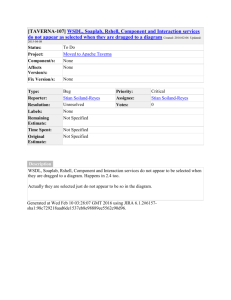
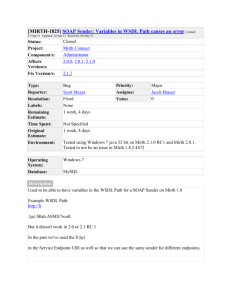
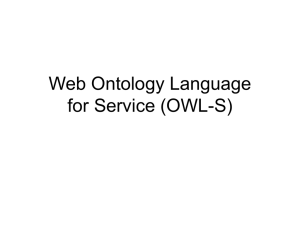
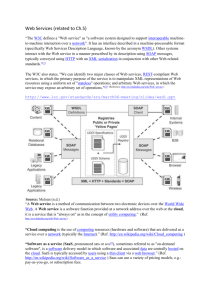
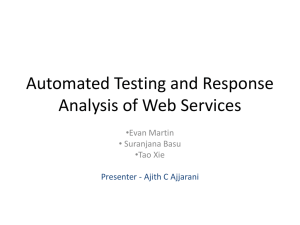
![[#CARBON-107] "cannot find a PolicyExtension to process](http://s3.studylib.net/store/data/007252781_1-e03d526df28a84511a9ca73936800434-300x300.png)
